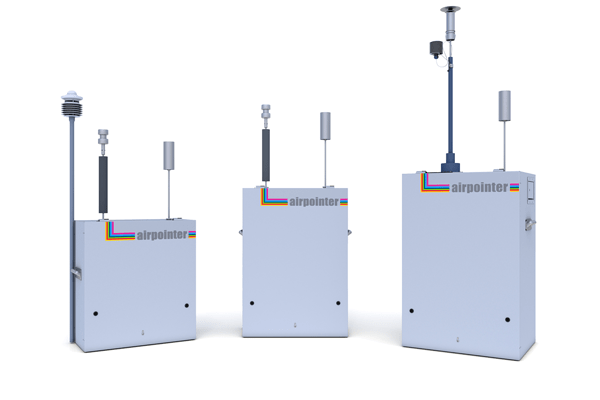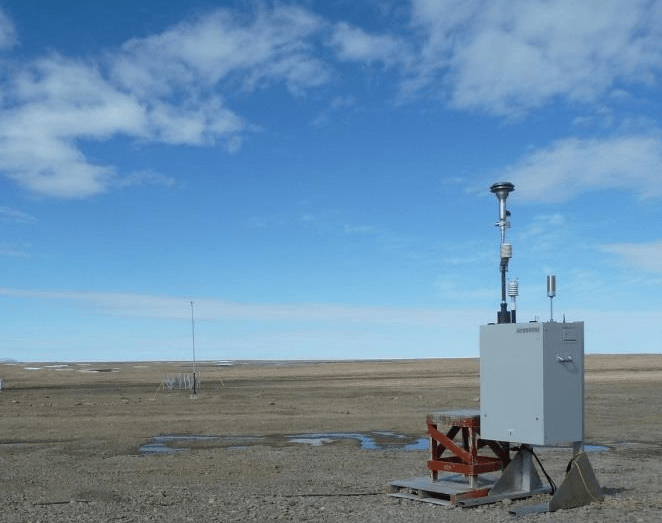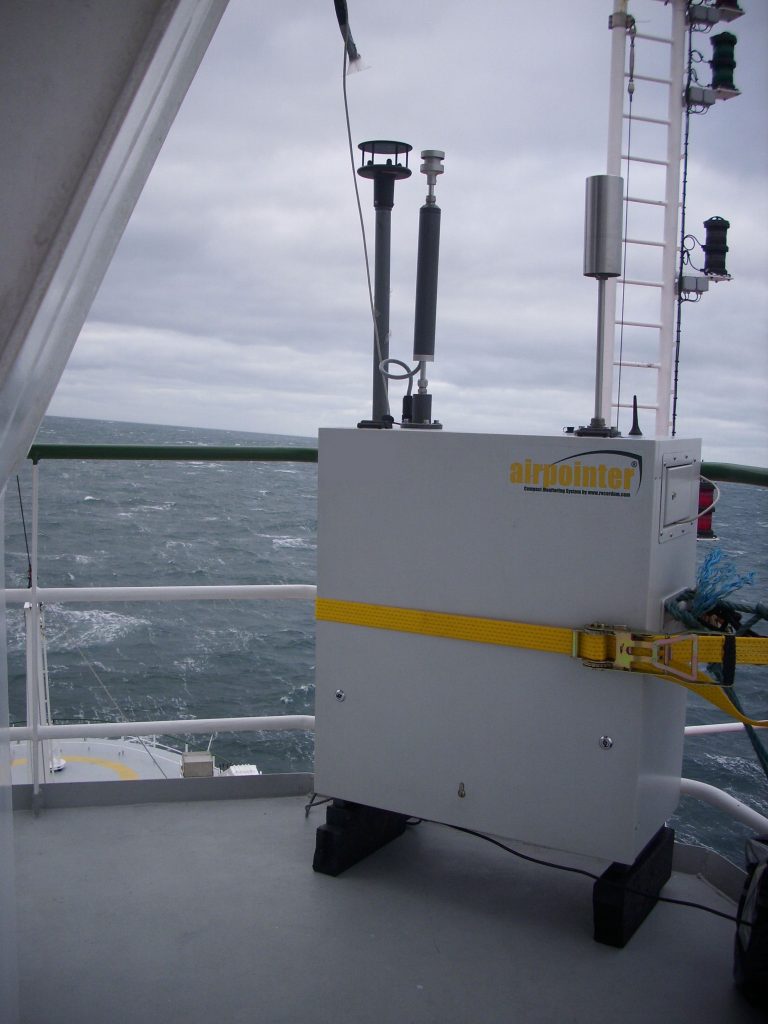
Airpointer
L'Airpointer® est un système révolutionnaire, compact et modulaire pour la surveillance de la qualité de l'air. Il est facile à installer, rentable à exploiter et facile à entretenir. Sa conception compacte lui permet d'être installé presque partout.
L'Airpointer® offre un choix de modules d'analyse U.S. EPA Federal Equivalent Method (FEM) pour la surveillance des polluants atmosphériques classiques (SO2, NO2/NOX, CO, O3 et PM). D'autres modules pour d'autres polluants sont disponibles (H2S, COV, BTEX, etc.) et il exploite des capteurs externes supplémentaires (vitesse du vent, direction du vent, intensité lumineuse, GPS, comptage du trafic, etc.)
Le système intégré de gestion des données enregistre les données de surveillance provenant des modules de gaz et de particules de l'Airpointer ainsi que de divers capteurs tiers externes. Un serveur Web interne permet de récupérer les données à l'aide de n'importe quelle connexion Internet. Une interface de navigateur Web permet un contrôle complet de l'unité à distance, ainsi que l'affichage des données à l'aide de graphiques faciles à lire. Tous les paramètres peuvent être affichés localement ou en ligne.
Son système avancé et breveté de gestion de la température et de l'énergie réduit la consommation d'énergie de 90 % par rapport aux stations comparables, et l'Airpointer® sera prêt à fonctionner dans les 30 minutes suivant sa mise en service initiale.
L'Airpointer® est un dispositif unique et breveté de mesure de plusieurs paramètres environnementaux de la qualité de l'air (US 7,756,683).
Autres fonctions intégrées
- Zéro/Span interne pour un contrôle qualité et une précision automatisés
- Entrée d'échantillonnage de gaz pour des mesures en continu de gaz sélectifs
- Entrée d'échantillonnage de PM : pour la mesure des PM2.5, PM10 ou TSP selon la configuration
- Pompe d'échantillonnage longue durée
- Filtre à durée de vie prolongée : Un filtre cylindrique à tamis en téflon permettant une durée de vie prolongée du filtre
- Contrôleur d'acquisition de données intégré qui sort les données dans différents formats accessibles à l'utilisateur.
Applications pratiques :
- Configuration des lignes de clôture pour le pétrole et le gaz
- Autres configurations industrielles : aciéries, usines chimiques, pétrochimie, exploitation minière
- Outil de référence communautaire pour la vérification des réseaux de petits capteurs
- Configuration des tunnels de circulation et autres configurations proches du bord de la route
- Opérations militaires : recherche et signalement des polluants atmosphériques et de la visibilité
- Aéroports : identification de la pollution générée par les avions et le trafic terrestre
- Universités et instituts de recherche : mesures précises, fiables et vérifiables de la pollution atmosphérique
- Ports et havres : émissions des navires



APPAREIL PHOTO NUMÉRIQUE OLYMPUS
